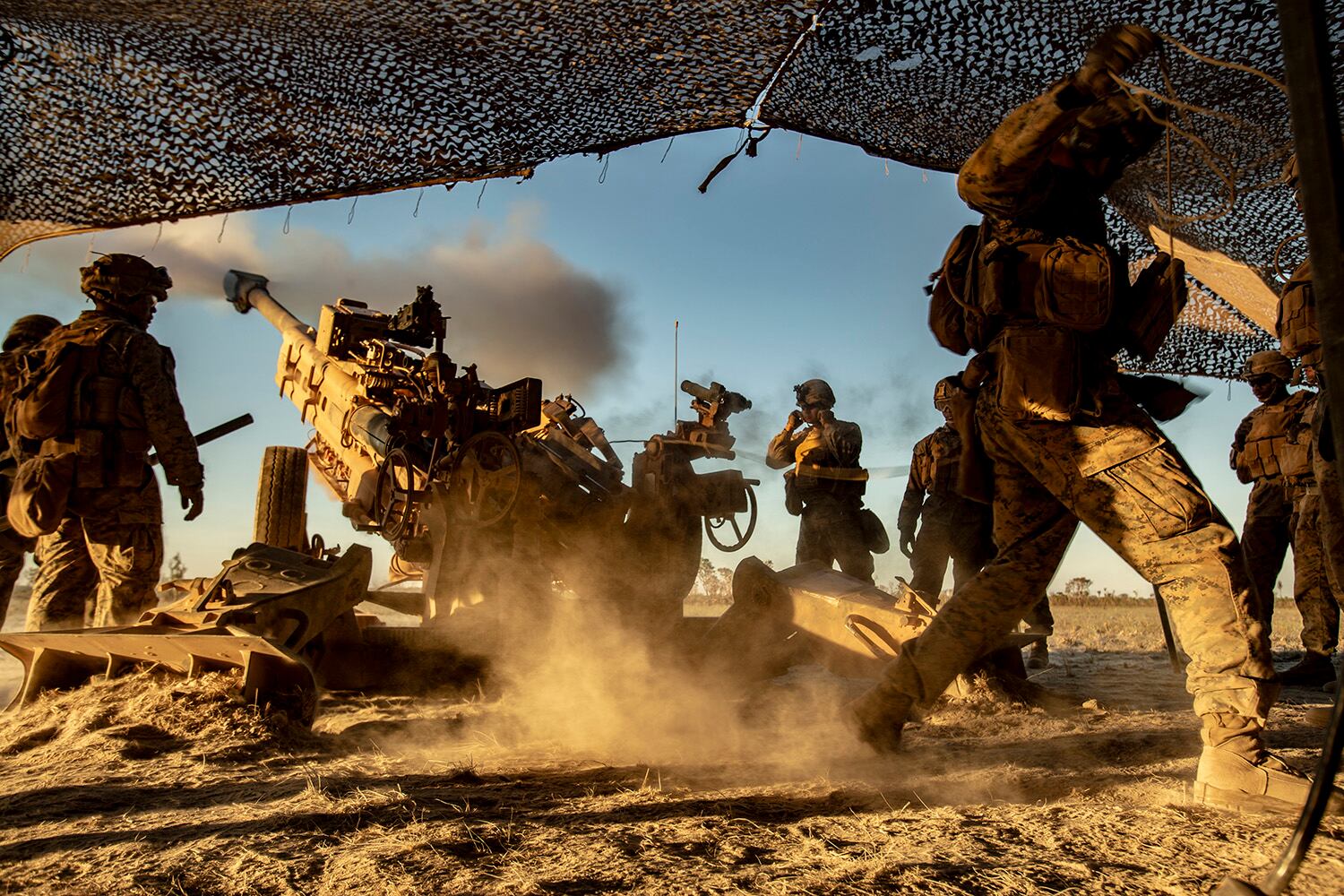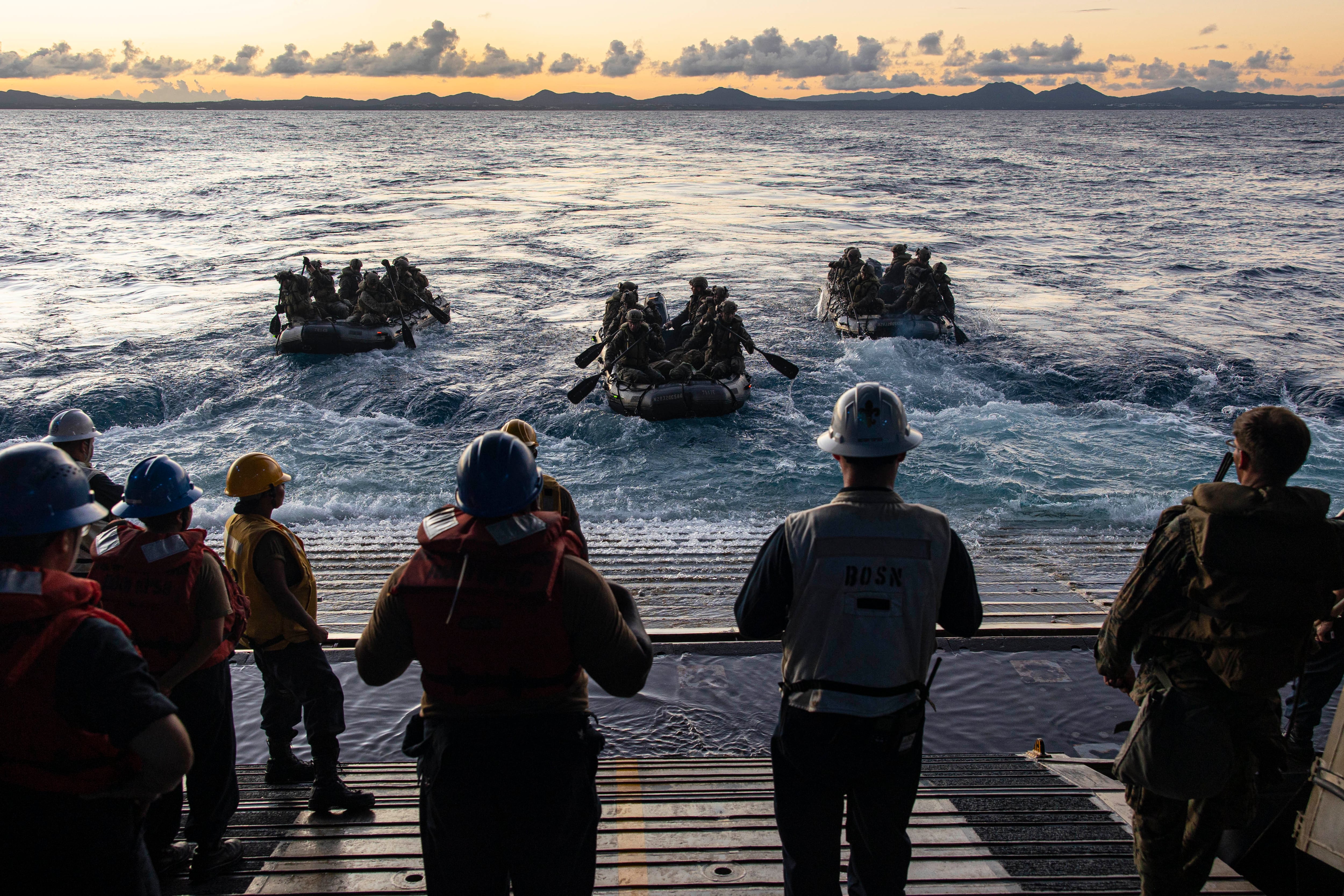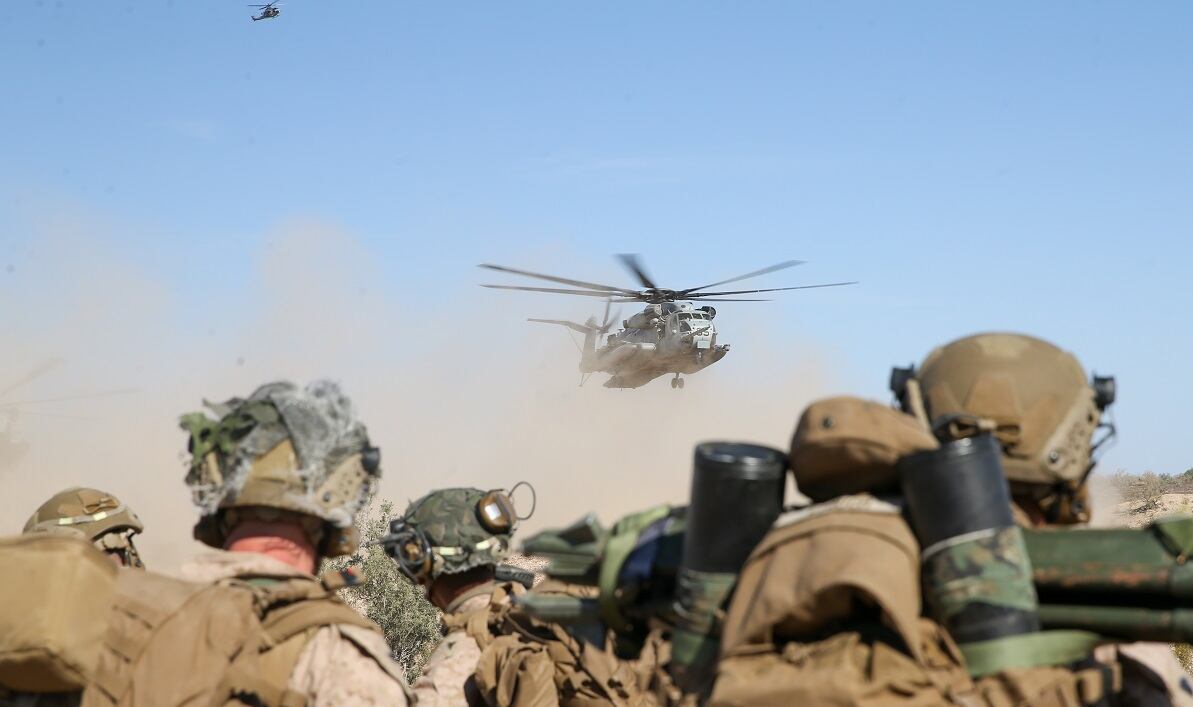In February 2003, Secretary of State Colin Powell gave an impassioned United Nations speech outlining the evidence of Iraq’s development and possession of chemical and biological weapons of mass destruction.
The storm clouds of war were gathering. Also that month, all Marine Corps Training and Education Command officers were assembled in the Quantico, Virginia, theater. As a young captain, we were there to listen to a different speech, one by a recently retired general we revered.
Gen. Tony Zinni said he initially had planned to talk about leadership training and education. But upon further consideration, he decided to refocus his remarks to “The duty of a retired general.”
He proceeded to outline his growing alarm at the haste that the U.S. was rushing to war with Iraq. He first expressed concerns about Powell’s evidence of weapons of mass destruction. He spelled out the problems with Central Command’s planning efforts that had produced an invasion plan with too few ground force formations. He then forecast a lengthy stability operation that would result in years of wasted U.S. time, treasure and lives.
We were nonplussed. Some agreed with his assessment. We also knew that as Central Command’s most recent former commander, Zinni possessed the experience and credibility to make the assertions he did. To be fair, however, we were young officers stuck in training and Quantico assignments, angry that we were missing the chance to march into Iraq. We also were active-duty Marines, obligated to follow the orders of our commander-in-chief. We were not disposed to publicly agree with Zinni’s cautions about Operation Iraqi Freedom.
We all eventually got our wish and joined the war we thought we were going to miss. We learned over the next 20 years, in both Iraq and Afghanistan, that the retired general was right: Poor operational and strategic decisions made in haste and hubris always created tactical problems for us to solve.
RELATED

As in 2003, we are at a critical time. Today there are substantive questions about the Corps’ wholesale redesign and restructuring. We are hearing from many retired generals that Force Design 2030 is an existential threat to the Corps’ future.
These retired generals quietly approached Marine senior leaders for nearly two years but felt ignored. Now that they have reluctantly made their concerns public, we are witnessing an institutional information campaign that aggressively dismisses and condemns their concerns.
Like 2003, the past three years increasingly stink of the “we know better” hubris that marked the U.S.’ information campaign preceding the Iraq invasion.
The redesign of our Corps, we are told, is irrevocable. But questions continue to plague any critically thinking Marine.
Most of the time, the answers to the questions include unvalidated assumptions, contain promises of fantastical equipment capabilities, and repeat the vague insistence that “the character of war is changing, and we must adapt.”
Like Powell’s 2003 speech, the evidence to support these answers grows increasingly thin. The louder the professional messaging and narrative of the institution’s information campaign becomes, the more the audience wonders if the retired generals might be right again.
Can’t ignore the questions
Has the Corps’ redesign been discussed, debated and tested?
While Marine Corps Maneuver Warfare doctrine officially was introduced in 1987 and codified in 1989, the capstone doctrinal publication FMFM-1 only was published after live testing and debate had been exhausted. This discussion and debate had begun in the early ‘70s and had been the subject of operational units’ after-action reviews at every level from the platoon upward. Platoon commanders from the 2nd Marine Division in the late ‘70s still tell stories of unforgiving after-action review sessions after force-on-force exercises.
The restructuring’s implementation has proceeded at a breakneck pace. The initial planning effort concluded quickly, and deep structural changes eliminating major organic combat power and support were ordered within months. Some war games only came after the old force structure was gutted, and no early war games or exercises included operational units field testing the concepts.
Nondisclosure agreements prevented most units from learning details, and stifled debate on the wisdom of the premise that Force Design 2030 is the Corps’ only way forward in the age of precision munitions.
RELATED

Assumptions plague every operational discussion about stand-in forces and its ability to survive in austere environments ― assumptions that we must believe will be verified in the future. In most planning sessions and exercises, these assumptions mount, as do questions and doubt.
Are “low-observable” stand-in forces realistic? As tactical planners test the concepts of introducing missile platforms, Marines and logistics into an austere base on a foreign-owned island, their understanding of the nature of war creates a list of questions that cannot be ignored. Recall infantry companies or special operations firm-bases in Iraq or Afghanistan as examples of the inevitable mission-creep that will occur.
Local curiosity will turn into human intelligence collection, which will turn into targeting vulnerability. Logistics requirements will demand much more than locally procured rice for chow. Within hours or days, the force protection requirements will grow quickly. The “low-observable” base will soon be surrounded by jersey barriers and Marines will be driving armored convoys to bring water and fuel from the China-owned port facility. Zinni called this the “naked and afraid” strategy.
The 2018 National Defense Strategy defines five significant threats, with the primary competitors being Russia and China, neither it nor any other congressional mandates are pushing the Corps to divest of significant combat power.
Are the Corps’ sensing and fires in support of sea-denial integrated in operations plans? Is this relevant to the joint force? The Corps’ restructuring is divesting organic sensing and fires from infantry units. The promised future sensing and fires capabilities don’t appear to increase ground forces’ reach significantly enough to be of value to the Navy’s regional mission, and the stand-in force mission doesn’t appear to be on track to be integrated into current operations plans.
RELATED

Is our force-in-readiness mission preserved despite the elimination of combat power? The Corps will have at least a three-year trough of readiness in the coming years. If war or crisis come during this time, “first to fight” as a motto will be a hollow historical relic.
What makes Marines the way they are? This is also the most alarming question, as the Corps’ relevance is wholly dependent on the ethos of its individual Marines; what Victor Krulak described as “unfailing alchemy” in “First to Fight.”
Talent Management 2030 seeks to develop an older force. Its premise is that our current manpower model is of the industrial age and incompatible with future war. Much data and analysis have been assembled that proponents use to insist the Corps’ historical drive for fit, aggressive youth is misguided and out of sync.
Why, however, does our observation of the performance of companies and battalions in combat — especially relative to adjacent battlespace occupied by other services, with older troops — seem to counter the narrative that Marines are young and dumb? Why do Marines of any rank seem to be prized for their ability to adapt, improvise and overcome? Do changes in the character of war demand that we change the very foundational culture of our force ?
These are some of the questions critically thinking Marines ask quietly as they gather around conference tables and PowerPoint slides in operational units throughout the Corps.
If I were a retired general, I might pose a more pointed analogy. Did we burn our house down for the insurance money? Are we living in our car, spending insurance money on gas while we have nowhere to live? I am not, however, a retired general. Me and other Marines have only heard their considered and intelligent arguments.
We have observed the Corps’ pressure on the Marine Corps Gazette, followed by the pulling of these generals’ articles from its pages, the shunning of their presence at the Marine Corps University, and dismissal and mockery of their input from leadership.
This information campaign sounds a lot like 2003. And back then, Zinni had it right. Might today’s retired generals also be right? ■
Col. Jeffrey Dinsmore is an active-duty Marine who has served under 11 commandants and at every echelon from the platoon to the division since enlisting in 1986.
Have an opinion?
This article is an op-ed and as such, the opinions expressed are those of the author. If you would like to respond, or have an editorial of your own you would like to submit, please email Marine Corps Times Editor Andrea Scott.
Want more perspectives like this sent straight to you? Subscribe to get our Commentary & Opinion newsletter once a week.





